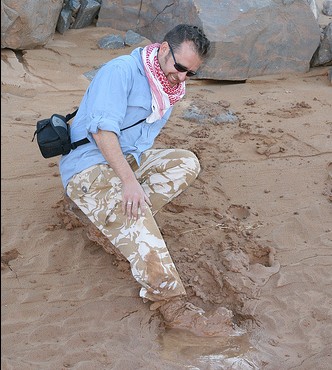How Writers Can Spot Those Pesky Flaws in Their Fiction
All I see are a bunch of trees.
That’s what a lot of my clients say to me.
Well, actually, no one has ever said those exact words to me. But, in essence, that is what they’re saying.
And when I peered deep into the editing forest, after a number of years of working as a copyeditor, that a lot of the trees looked the same. I kept having that dreamlike sensation that I’d been there, in that same spot, many times before.
Truth is, I had. Waaaayyy too many times.
All this to say: novelists make a lot of the same mistakes. They have a lot of the same weak components in their writing. They can’t seem to see those glaring mistakes—because those darn redwoods are in the way.
The best way to see a forest from the trees is to get some distance. Flying high like a bird reveals to you that beautiful forest spreading out in all directions. Writers need to step back, way back, from their writing to see the fatal flaws eating away at their scenes like a cancer.
Okay, not every manuscript is about to suffer a painful death. But don’t you want to make sure yours isn’t?
Here’s the problem with getting distance: all that gives you is a new angle or perspective. But if you are searching for something in the forest (that you can now see), if you don’t know what that something looks like, you won’t spot it.
And sometimes it takes more than glancing at a photo of a thing to be able to identify it in the real world.
 For years I collected agates on the beach. Our family beach house (before it fell off the huge cliff during El Nino) sat above a long stretch of beach that, on a good day, was covered with rocks. Right after a turbulent north-coast storm was the best time to hunt for agates.
For years I collected agates on the beach. Our family beach house (before it fell off the huge cliff during El Nino) sat above a long stretch of beach that, on a good day, was covered with rocks. Right after a turbulent north-coast storm was the best time to hunt for agates.
My house is filled with jars and glass coffee tables containing some of the hundreds of agates I’ve collected over the years. Here’s a shot of some of my rocks in my “agate table” I built (specifically to hold all my agates. I built about six of these tables!).
Are they valuable? Heck no. But that wasn’t the point. People who do jigsaw puzzles get it. It’s a challenge to spot agates in the midst of thousands of other small rocks. And it takes practice to spot them.
I went agate hunting with pros and beginners, and the pros could spot those agates in a split second, their backs bent over, heads down, eyes scanning the ground in some kind of search-and rescue-type pattern. The beginners would stumble about or sit sifting rocks through their fingers bemoaning why they couldn’t find a blasted agate.
With help, a newbie learned how to spot them. I’d come alongside someone and pick up an agate, then explain the subtle details that I looked for. I gave tips on how to sift and seek. All good fun.
The best way for a writer to see the flaws in his manuscript is to have an “expert” point out what they look like and how to spot them. And with writing, you don’t just pocket the advice. You have to act on it. So that writer also needs instruction on what to do once he finds the flaws.
How do you fix them? How do you tackle a weakness and turn it into a strength?
The best way, to me, is to see examples. If you are told you don’t have a mastery on “show, don’t tell,” it doesn’t help you to be told that unless you see examples. Before-and-after examples are best. Having a flaw pointed out, then a revision to show how to fix that flawed passage, is the most helpful.
That’s why, when I came up with the idea to do a book on the twelve most ubiquitous fatal flaws in fiction writing, I wanted to include dozens of before-and-after examples. And that led me to my next thought: writers write in different genres, points of view, and writing styles. So, to put the most helpful book together, I enlisted four other editors (who are also novelists) to help write this book.
We couldn’t cover everything, but our aim was to give a broad spectrum of examples so that any writer using this resource could see the forest for the trees.
Few writing craft books go this deep into fiction-writing flaws and provide before-and-after passages. Without examples, often instruction is merely theoretical and just doesn’t click.
often instruction is merely theoretical and just doesn’t click.
Reading a before passage, a writer can hunt for the flaws, and maybe she won’t see them. But when the after passage fixes the flaws, then they’re easily spotted. While the after passages are only one example of how a flaw might be corrected, the objective is to teach the writer how to spot the flaw and how she might go about eliminating it from her own prose.
Do you know what flaws show up in your writing? Do you know how to fix them?
Not everyone can afford to hire a writing coach to point out all those flaws, so having a book that covers the most flagrant of these flaws is a great help. 5 Editors Tackle the 12 Fatal Flaws of Fiction Writing is a big, deep exploration into these key flaws.
You can buy the Kindle ebook for only 99 cents up until Christmas, so get your copy now!
I hope you’ll check it out and let it be a mirror to your writing. It will show you the forest for the trees.
And while it won’t help you learn to spot agates on the beach, it will give you a better reward: a flawless (we hope) manuscript!












This is very timely for me. I have a first draft that needs attention. I got my copy of The 12 Fatal Flaws, thanks! It’s like a Christmas present a few days early.:-)
Thanks so much for the opportunity to get your books at a great price. I’ve read them all through my KU subscription, but now I can read them whenever! Whether I’m just critiquing a paragraph or editing a manuscript, your books are an asset to my library of help.
Glad to hear it!